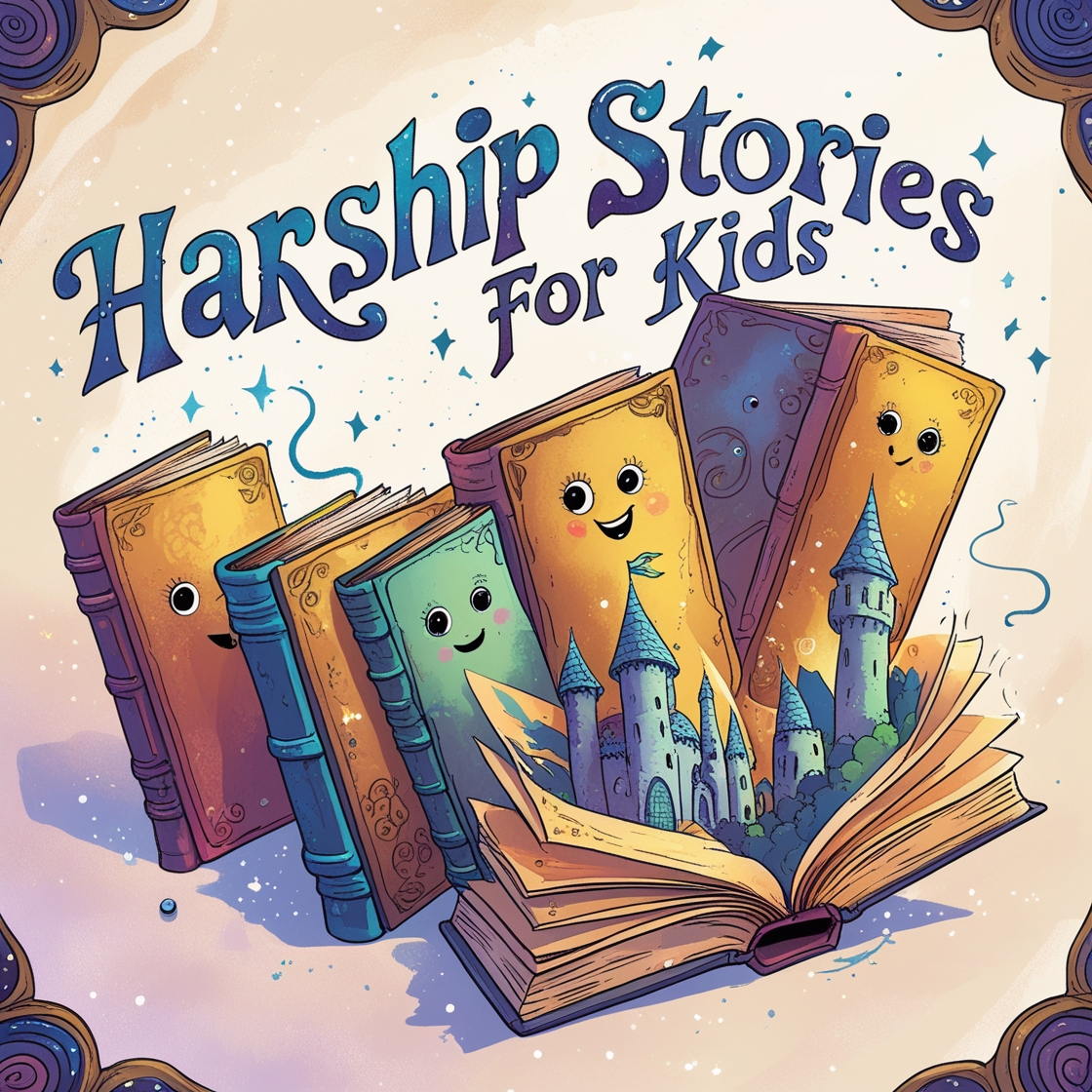Kids love stories that challenge them to think in new ways, and our short stories for kids collection not only entertains but also sparks creativity. Many of these tales highlight problem-solving skills that children can apply in real life. If you’d like to explore more uplifting reads, check out our bedtime stories for kids section for inspiring lessons woven into gentle narratives.
Parents and teachers can also find helpful strategies in the Edutopia guide on teaching problem-solving to encourage kids to tackle challenges with confidence.
Problem solving for kids is like being a detective for everyday challenges. Whether it’s figuring out how to fix a broken toy, sharing toys with friends, or completing a tricky puzzle, problem solving helps kids think clearly and feel confident. It’s a skill that grows with practice and makes life more exciting.
Steps to Solve Problems: The Kid’s Way
Break down problem solving into easy steps kids can understand and follow:
- Understand the Problem
What’s happening? Why is it a problem? - Think of Possible Solutions
Brainstorm, Think of all the ways you could fix or improve the situation. Maybe pump the tire, ask for help, or use a different bike. - Choose the Best Solution
Which one seems easiest or most helpful? - Try It Out
Put your idea into action and see what happens.
Check and Change if Needed
Did your idea work? If not, try another solution.
Fun Problem-Solving Activities for Kids
Puzzle Time: Jigsaw puzzles and brain teasers help kids think carefully.
Role-Playing: Act out real-life problems like sharing or asking for help.
Building Challenges: Use blocks or LEGO to build something specific, like a bridge or tower, and find ways to make it stronger.
“What If” Questions: Encourage imagination with questions like, “What if your pet could talk? How would you solve problems together?”
1.Maya and the Missing Homework
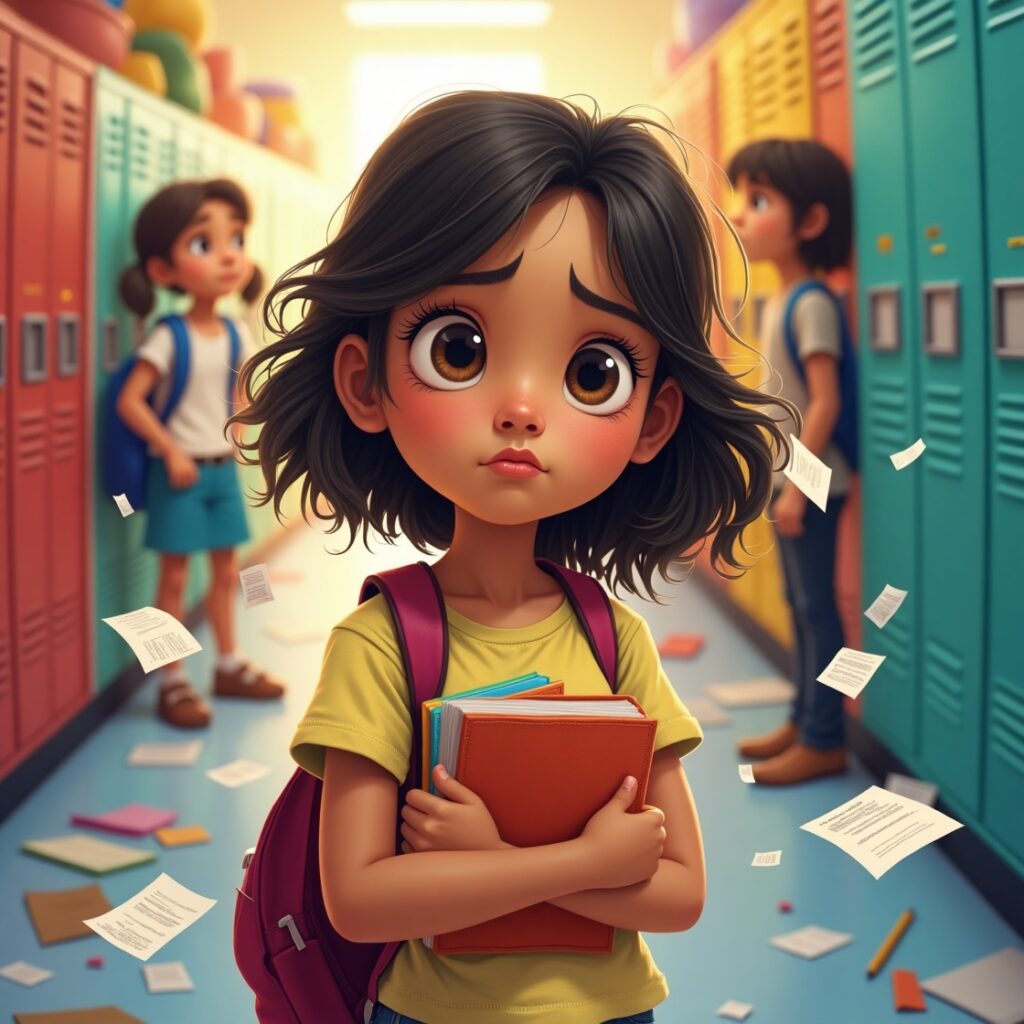
Maya was proud of the drawing she had made for her school project. It had a rainbow, smiling animals, and even glitter glued carefully around the edges. But the next morning, when she opened her backpack to show it to her teacher, it was gone.
She took a deep breath. “Okay,” she whispered to herself, “don’t panic.”
First, she searched her backpack twice. Then she looked under her bed, behind her bookshelf, and even in the fridge (just in case!). Nothing. Maya remembered she was coloring it in the living room last night. She ran downstairs and checked under the sofa cushions.
Still no luck.
Then, while helping her mom sort laundry, she spotted something sparkly poking out from a pile of clothes. It was her project! She had set it down on the laundry basket by mistake.
Maya smiled with relief. “Next time, I’m putting it straight into my school folder.”
Moral: Staying calm and thinking clearly helps us solve problems better.
2.Sam’s Squeaky Shoes
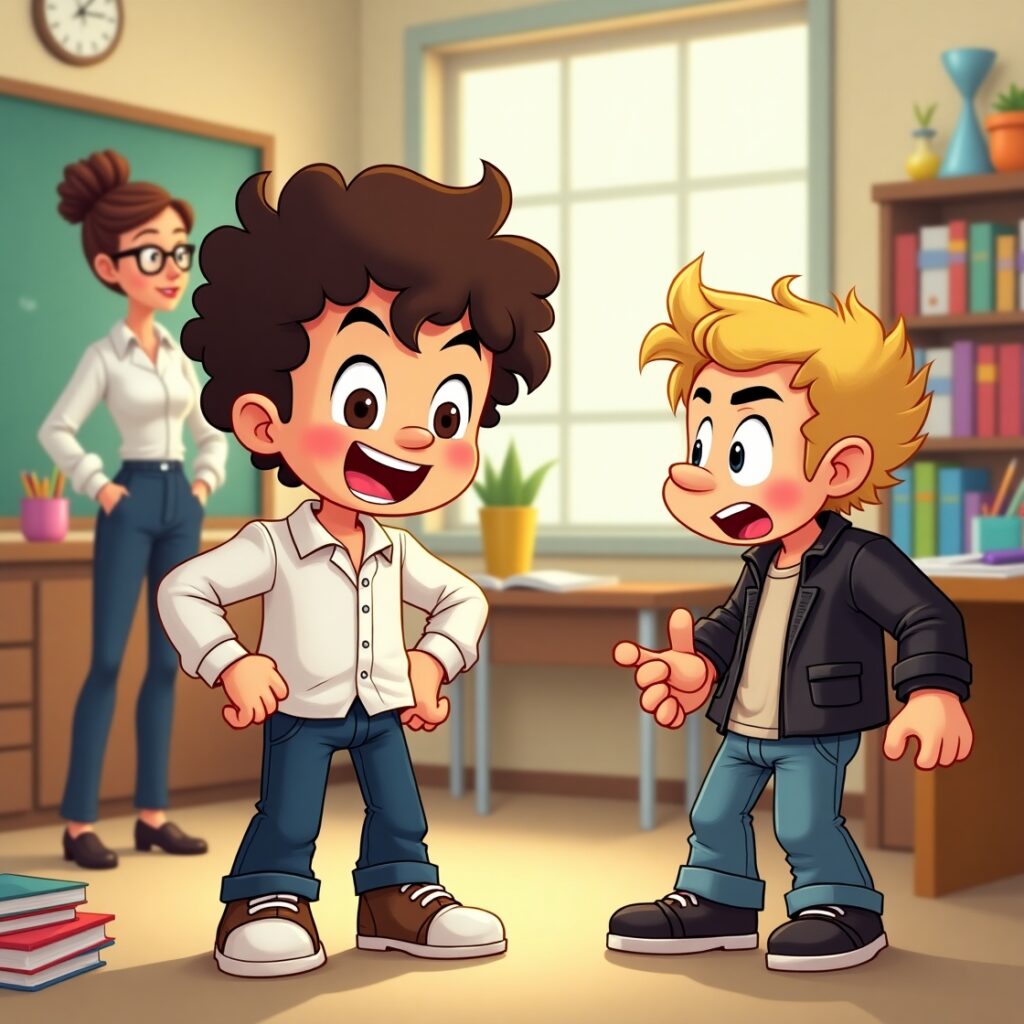
Every step Sam took made a loud squeak-squeak sound. At first, it was funny. But when his shoes squeaked all through music class and during reading time, his classmates couldn’t stop giggling.
Sam felt embarrassed.
That afternoon, he tried tightening his laces no change. He took his shoes off and looked at the soles. Nothing was stuck. He finally told his mom about it, and she had an idea.
She took a candle and gently rubbed wax on the rubber parts of the shoe. Then, she had Sam walk across the floor. No squeaks.
Sam grinned. “Magic shoes now”
Moral: It’s okay to ask for help when you don’t know how to fix something.
3.Ella and the Garden Puzzle

Ella loved planting flowers with her grandma. This spring, she planted a row of daisies, tulips, and marigolds. She watered them daily and even talked to them (just like Grandma said).
But after two weeks, the flowers didn’t look happy. Some leaned to the side, and others barely bloomed.
Ella wondered what was wrong. She pulled out her flower book and read about sunlight and space. Then she realized: she planted them too close together.
The next day, she carefully moved some flowers farther apart, placing the sun-lovers in the brightest spots. A few days later, her garden looked colorful and full of life.
Grandma hugged her. “Smart thinking, my little gardener.”
Moral: Learning and trying new solutions can lead to blooming success.
4.Leo’s Lost Puppy
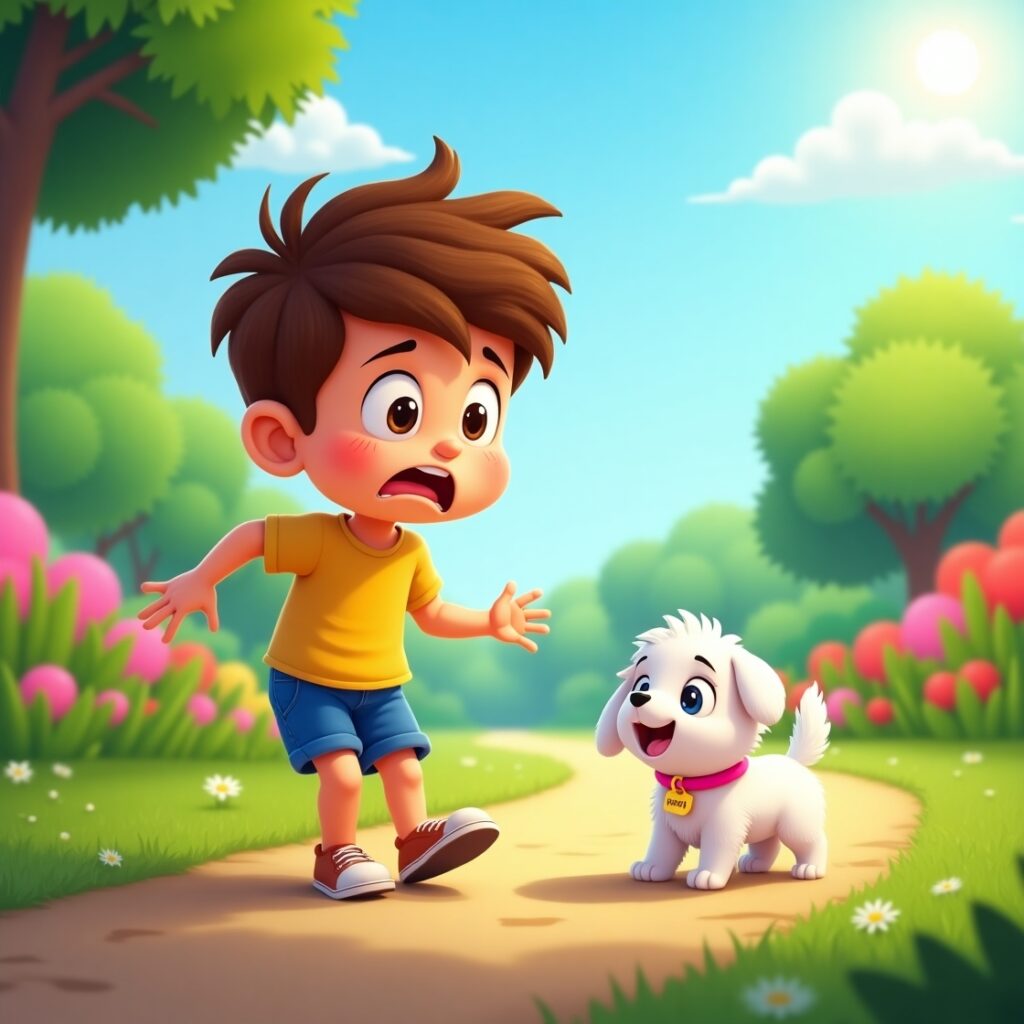
Leo’s puppy, Bubbles, was full of energy. One day, while playing at the park, Bubbles chased a butterfly and vanished behind the trees.
“Bubbles” Leo called. But there was no bark in reply.
Instead of crying, Leo told his mom and asked nearby kids if they’d seen a white puppy with a spot on his ear. He and his friends made quick “Lost Puppy” signs and posted them around.
As they were walking through the park again, a boy pointed. “Is that your dog by the ice cream cart?”
It was Bubbles licking a vanilla cone someone dropped.
Leo ran over and hugged him tight. He added a bell to Bubbles’ collar that night.
Moral: Staying calm and asking for help makes a big difference in tricky moments.
5.Zara’s Tower Trouble

Zara was in a block-building contest at school. Her goal? Build the tallest tower before the timer buzzed.
She stacked the blocks as fast as she could but CRASH. They toppled over.
Again she built this time slower, but still tall. CRASH, Down they went.
Zara paused. She remembered how builders made wide bases. She tried putting the biggest blocks on the bottom, and smaller ones on top. Her hands moved carefully.
When the timer beeped, her tower stood firm and tall.
Everyone clapped. Zara grinned. “It wasn’t speed it was thinking that worked.
Moral: Planning and patience build stronger success than rushing.
6.Ben and the Tangled Kite

Ben loved flying his red-and-blue kite on windy afternoons. One breezy Saturday, he ran to the park with his kite string unwinding fast. But as he turned around a tall tree, SNAG.The string got caught in the branches.
“Oh no,” Ben said, tugging the string. But the harder he pulled, the more tangled it got.
He stopped pulling and sat under the tree, thinking. “What would Dad do?”
Ben stood up, slowly walked around the tree, and gently untwisted the string one loop at a time. It took patience, but soon, the string came free.
With a smile, he ran to the open field and his kite soared again.
Moral: Sometimes, gentle thinking works better than force.
7. Lily’s Forgotten Birthday
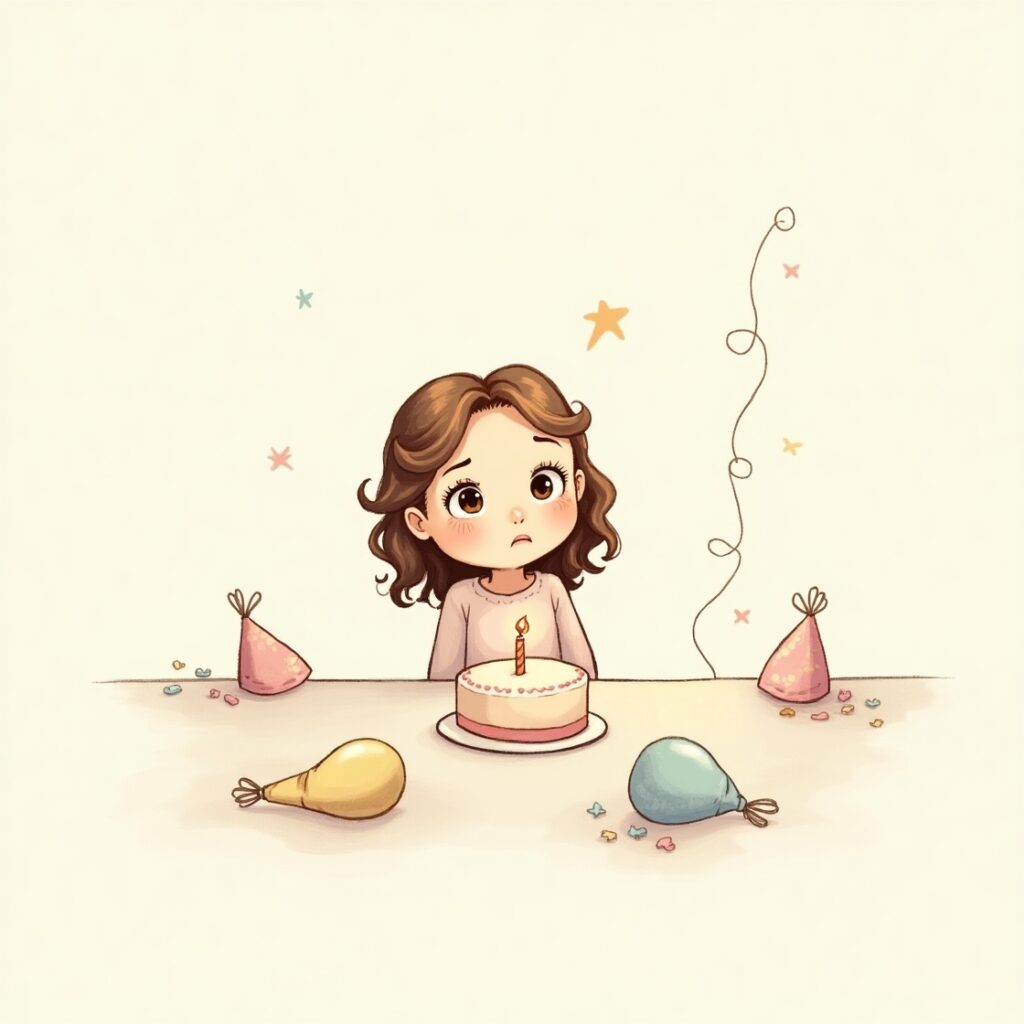
Lily woke up excited. It was her birthday.But at school, no one said anything not even her best friend Mia.
By lunchtime, Lily felt forgotten.
Instead of being upset, she had an idea. “What if I plan something myself?” she thought.
At recess, she invited her friends to a picnic in the park after school. She brought cookies, juice boxes, and a blanket. When her friends arrived, they sang “Happy Birthday” and gave her surprise drawings they made during art class.
Mia smiled, “We didn’t forget we just wanted to surprise you later.”
Moral: When things don’t go as expected, you can still make joyful moments.
Jake and the Broken Crayon
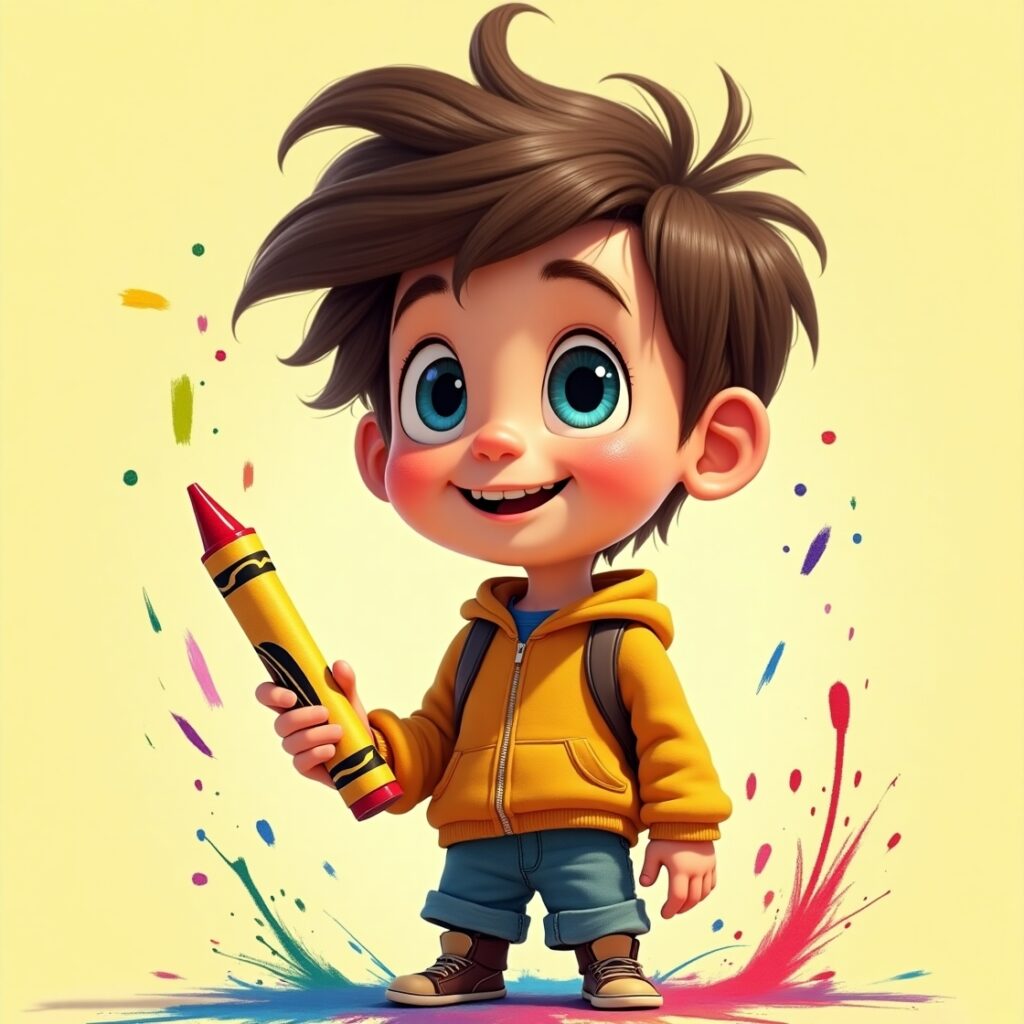
Jake’s favorite green crayon snapped in half right before he finished coloring his jungle drawing. “Now I can’t finish the trees.” he groaned.
He almost threw it away but then noticed both pieces still worked.
Instead of giving up, Jake used the broken ends to color the leaves and grass. He even used the jagged edge to make a cool texture for the tree bark.
His teacher loved the drawing and said, “Sometimes mistakes help you discover something new.”
Moral: A broken tool doesn’t mean a broken idea creativity finds a way.
9. Anna’s Rainy Day

Anna had planned an outdoor treasure hunt for her cousins. She made maps, hid clues, and even made a golden paper medal for the winner.
But when they woke up splish splash it was raining hard.
Everyone looked disappointed.
Then Anna grinned. “Let’s have an indoor treasure hunt.”
She quickly gathered socks, puzzle pieces, and toys and hid them all around the house. She redrew the maps to match the living room and kitchen.
Soon, everyone was laughing and racing around in socks, solving clues.
“It’s even better than outside.” one cousin said.
Moral: A change in plan doesn’t have to spoil the fun imagination makes everything better.
10. Max and the Jammed Door
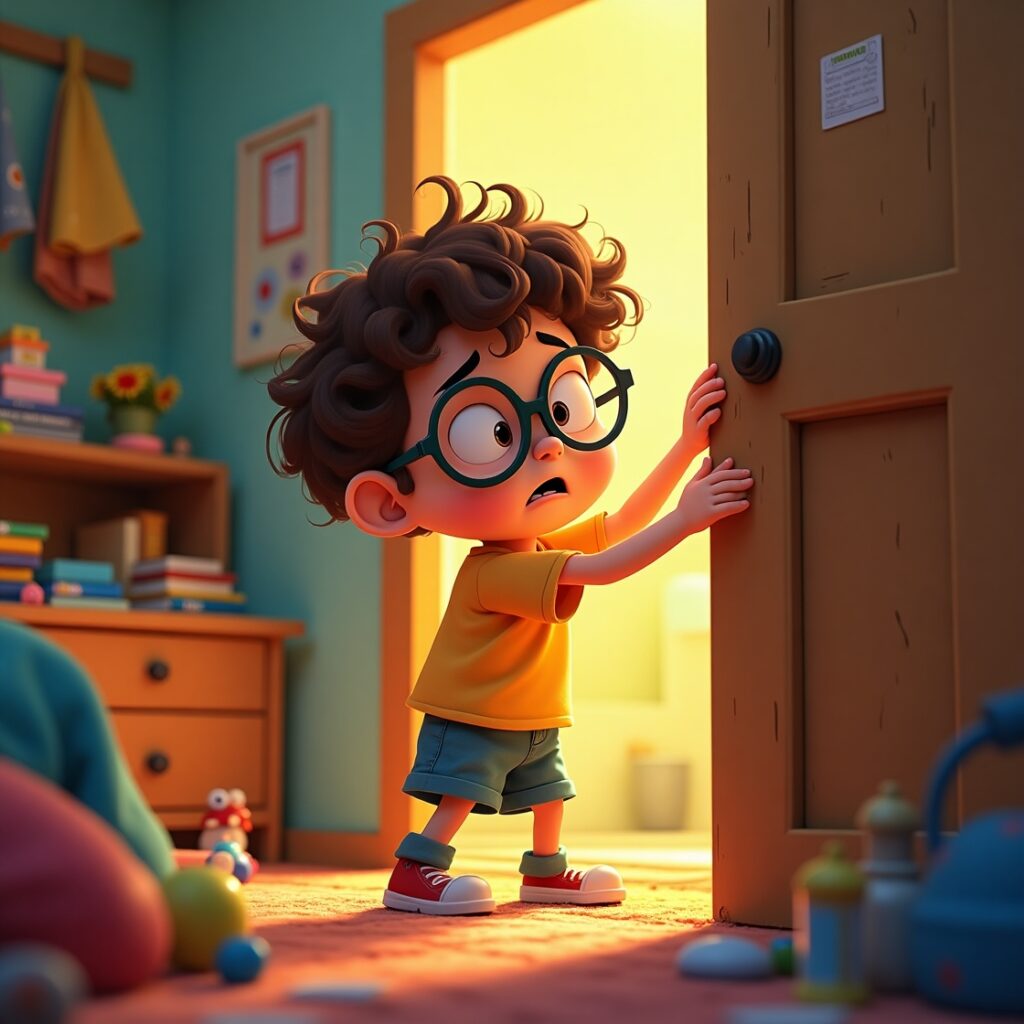
Max’s bedroom door wouldn’t open one morning. He tried turning the handle, then pushing with his shoulder nothing.
“Don’t panic,” he said to himself.
He looked under the door and saw his toy robot had tipped over and jammed the door from the inside. Max got a coat hanger, slid it under the door, and gently nudged the robot out of the way.
Click! The door opened.
He ran downstairs and hugged his parents. “I fixed it by thinking like an engineer”
Moral: Big problems can have simple fixes if you stay calm and think smart.
Nina and the Puzzle Contest
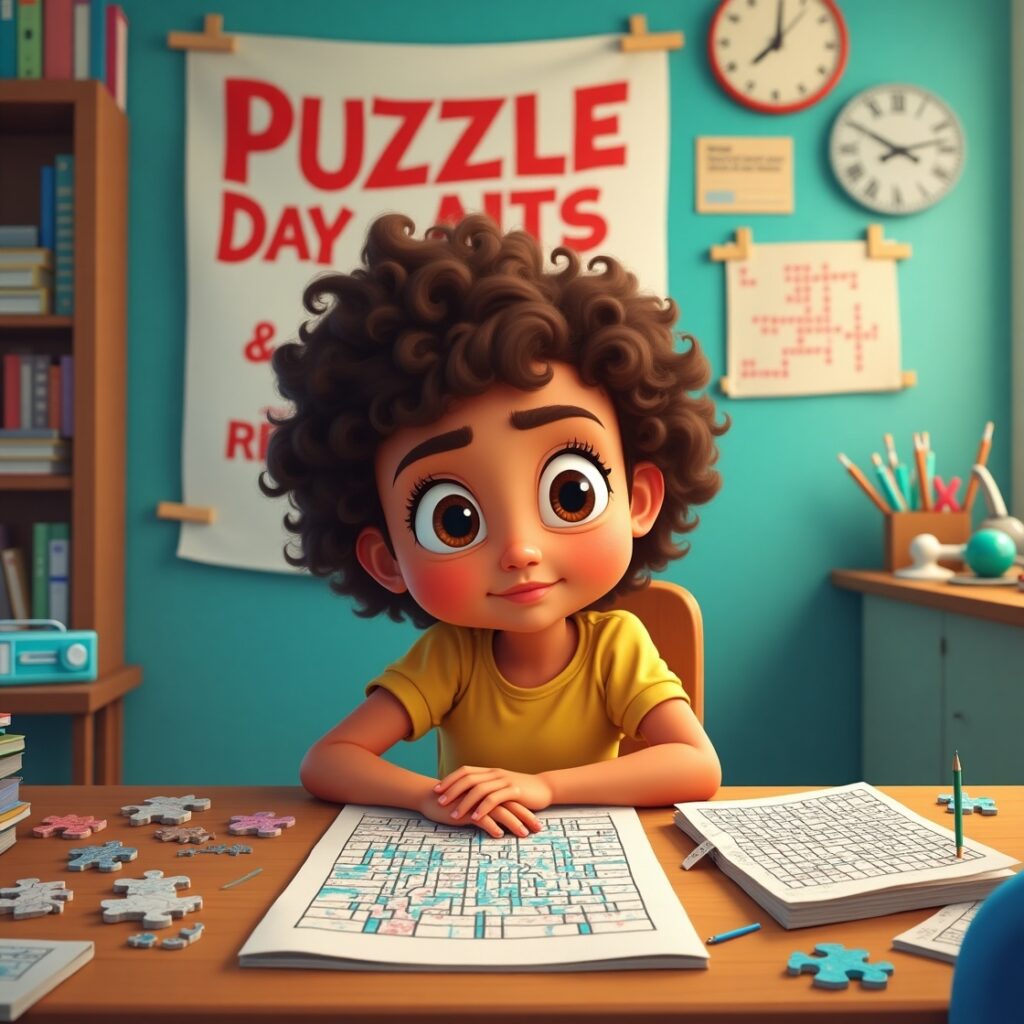
Nina loved puzzles, crosswords, jigsaws, mazes anything that challenged her mind. When her school held a “Puzzle Day” contest, she was thrilled.The prize? A glowing brain trophy.
But when the contest began, Nina froze. The puzzle was trickier than anything she had ever done. It was a maze inside a riddle inside a crossword.
Kids around her started filling in answers quickly. Nina felt pressure. But she took a deep breath and remembered what her teacher always said: “Solve one small part at a time.”
She ignored what others were doing and focused,first the maze, then the riddle, then the crossword. It took time, but she finished.
She didn’t win first place, but she did win “Best Thinker” for her focus and calm.
Moral: Solving one piece at a time makes even the biggest problems easier.
12. Omar and the Lego Tower
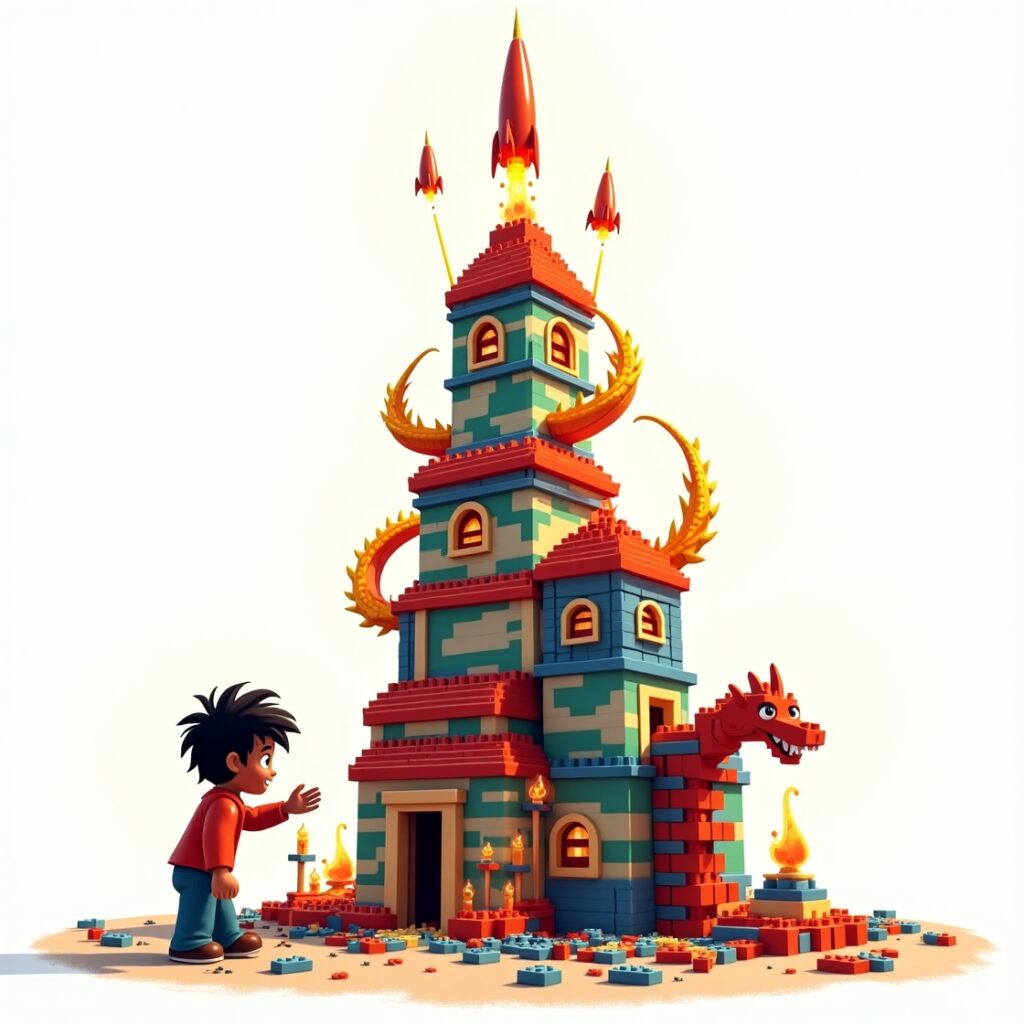
Omar was building the tallest Lego tower for his school’s “Imagination Fair.” His tower had rockets, dragons, windows and everything cool.
But during lunch, a classmate accidentally bumped into his desk. The tower crashed into pieces.
Omar’s eyes filled with tears. All that work gone.
But then he had an idea. He quickly sketched a plan on paper, choosing stronger base pieces and making the structure balanced. His friends offered to help, and together they rebuilt a new tower, even taller than before.
When the fair began, everyone gathered around Omar’s rebuilt masterpiece.
Moral: When things fall apart, starting over can lead to something even better.
13. Priya and the Lost Scarf

Priya had a beautiful red scarf knitted by her grandmother. She wore it everywhere. One windy day at the park, it flew off without her noticing.
When she realized it was gone, her heart sank. “Grandma made that for me,” she whispered.
Instead of panicking, Priya retraced her steps. She asked the ice cream vendor, the librarian in the park’s reading corner, and even a dog walker.
Finally, near the sandbox, a little girl held the scarf. “Is this yours? I picked it up so it wouldn’t get muddy.”
Priya hugged her. “Thank you, I’m so glad I didn’t give up.”
Moral: Staying calm and retracing steps helps us find what’s truly important.
14. Theo and the Robot Mix-Up
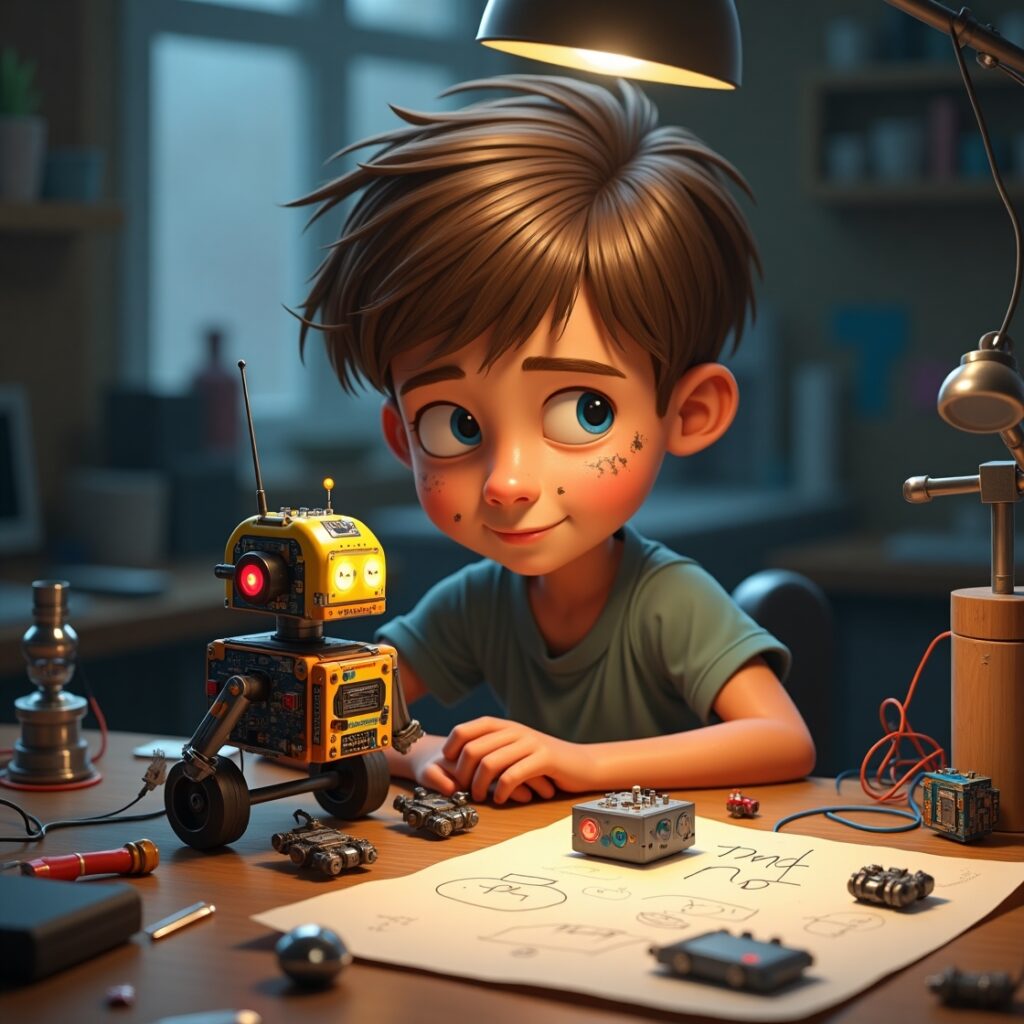
Theo was building a mini robot for the science fair. It was supposed to follow his voice commands but during testing, it just spun in circles and beeped.
Theo frowned. “This isn’t what it’s supposed to do…”
Instead of quitting, he took a break, had a snack, and came back with fresh eyes. He checked the wiring, reread the instructions, and noticed he had placed the voice sensor upside down.
He corrected the mistake and it worked! The robot rolled forward when he said, “Go.”
Everyone at the fair cheered as it danced to Theo’s voice.
Moral: Mistakes are part of learning look closely, and you’ll find the solution.
15. Alia and the Ice Cream Plan
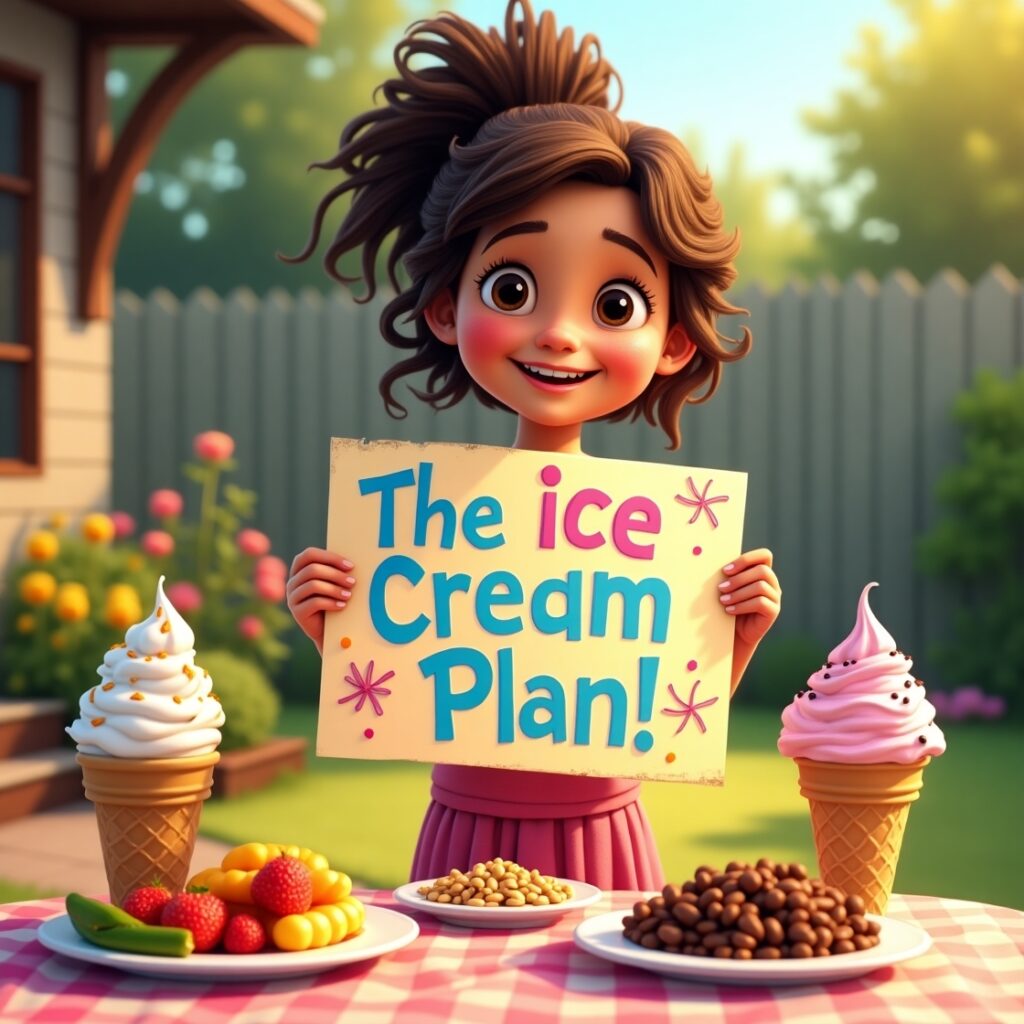
Alia wanted to start a mini ice cream stand outside her house during summer break. She made signs, decorated a table, and bought ingredients for sundaes.
But on opening day no one showed up.
She felt sad, but then thought, “Maybe people didn’t know about it.”
The next day, she handed out flyers, told her neighbors, and posted on her family’s group chat.
By the weekend, kids and parents came for sprinkles and scoops. She even made a “Create Your Sundae” menu.
Her stand became the talk of the block.
Moral: A good idea becomes great when you let others know about it.
Why Is Problem Solving Important for Kids?
- Builds Confidence: Solving problems makes kids feel proud and capable.
- Improves Thinking Skills: It helps kids become better thinkers and decision-makers.
- Encourages Creativity: Finding different solutions sparks imagination.
- Teaches Patience and Persistence: Sometimes the first try doesn’t work and that’s okay.
- Prepares for the Future: Life always has challenges, and problem-solving helps kids be ready.
How Parents and Teachers Can Help
- Ask Questions: Instead of giving answers, ask, “What do you think we can do?”
- Celebrate Effort: Praise trying and thinking, not just the right answer.
- Model Problem Solving: Show kids how you solve problems in daily life.
- Create a Supportive Environment: Let kids story make mistakes and learn from them safely.

